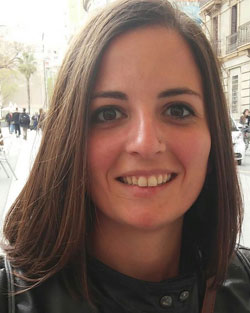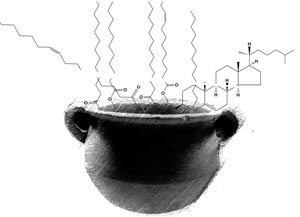Contact
mail@gemini-theme.com
+34934037534
Info
All demo content is for sample purposes only, intended to represent a live site. Please use the RocketLauncher to install an equivalent of the demo, all images will be replaced with sample images.
mail@gemini-theme.com
+34934037534
All demo content is for sample purposes only, intended to represent a live site. Please use the RocketLauncher to install an equivalent of the demo, all images will be replaced with sample images.
Quick Contact +34934037534 / macau@ub.edu
 Postdoctoral researcher at University of Witwatersrand
Postdoctoral researcher at University of Witwatersrand
+34 600 260 700
![]() Office
Office
![]() Esta dirección de correo electrónico está siendo protegida contra los robots de spam. Necesita tener JavaScript habilitado para poder verlo.
Esta dirección de correo electrónico está siendo protegida contra los robots de spam. Necesita tener JavaScript habilitado para poder verlo.
Presentation
I conducted my graduate studies in archaeobotany at the University of Barcelona under the direction of Prof. Rosa M. Albert. As a result, I received my PhD in December 2016. I use an archaeobotanic discipline, phytoliths, to study plant remains from the archaeological record in order to study the exploitation of vegetal resources by past populations and past environmental conditions. For my thesis work, I developed a modern phytolith reference collection on plants and soils from the world’s most diverse and endemic extra-tropical floral, the Greater Cape Floristic Region, located in South Africa. This material was later used as proxy for the reconstruction of past human plant gathering strategies and for the reconstruction of the past vegetation and climate conditions at Pinnacle Point, on the south coast of South Africa. Currently, I am a postdoctoral fellow at the Evolutionary Studies Institute (University of the Witwatersrand, South Africa). My postdoc research focus on correlating human strategies of exploitation of plant resources and landscape adaptation with climate and environmental conditions during the Pleistocene in southern Africa.
Research interest:
• The study of the exploitation of plant resources by past hunter-gatherers through phytolith analysis.
• The analysis of the mineralogical components of the sediments through infrared spectroscopy (FTIR) in order to assess phytolith preservation.
• The reconstruction of the paleovegetation, paleoenvironment and paleolandscape
• Relate paleoenvironmetal conditions to human sites and behavioral responses to climate change.
Publications
 Postdoctoral researcher
Postdoctoral researcher
+34
![]() Office
Office
![]() Esta dirección de correo electrónico está siendo protegida contra los robots de spam. Necesita tener JavaScript habilitado para poder verlo.
Esta dirección de correo electrónico está siendo protegida contra los robots de spam. Necesita tener JavaScript habilitado para poder verlo.
Presentation
Fernanda Inserra ha estudiado en la Università degli Studi di Siena, donde en 2008 obtuvo el título de Laurea Triennale en Ciencias de los Bienes Arqueológicos y, en 2011, el de Laurea Specialistica en Arqueología. En el año 2012 ha obtenido el título de Máster Oficial de Arqueología en la Universidad de Barcelona, y, en 2016, el de Doctorado dentro del Programa Sociedad y Cultura (especialización en Arqueología).
Su proyecto de investigación doctoral se titula “Alimentación en el nordeste de la península Ibérica durante la Antigüedad Tardía a través del análisis de residuos orgánicos en cerámicas”, y para su elaboración contó con una beca predoctoral FI, concedida por la Generalitat de Catalunya (2013-2016).
Sus intereses principales se centran en la alimentación durante la Antigüedad Tardía y la Alta Edad Media y en los análisis funcionales de las cerámicas y de las superficies pavimentales a través de la identificación de residuos orgánicos.
Durante sus estudios, ha podido ampliar su conocimiento sobre los análisis de residuos orgánicos en las cerámicas gracias a una beca Erasmus Placement, en cuyo marco ha realizado un aprendizaje en el Equip de Recerca Arqueològica i Arqueomètrica de la Universitat de Barcelona (ERAAUB), y también gracias a una Beca de colaboración en proyectos de investigación para estudiantes de tercer ciclo de la Universitat de Barcelona, en el marco del proyecto “Arqueología y Arqueometría de cerámicas de cocina tardorromanas en el Mediterráneo occidental: una aproximación integral (LRCWMED) (HAR 2009-08290”, subprograma HIST, del investigador Miguel Ángel Cau Ontiveros).
Ha participado también en el proyecto “El impacto de la arquitectura religiosa en el paisaje urbano y rural del noreste de Hispania y las Islas Baleares (ss. IV-X d.C.), Ministerio de Ciencia e Innovación, Plan Nacional I+D+I 2009, n. ref. HAR2009-13104/Hist. (fondos FEDER)” de l’investigadora Gisela Ripoll, mediante una Beca de colaboración en proyectos de investigación para estudiantes de tercer ciclo de la Universitat de Barcelona.
Colabora con la Dra Alessandra Pecci desde el año 2006 en proyectos de análisis de superficies pavimentales en yacimientos arqueológicos y de cerámicas arqueológicas, hecho que le ha permitido participar también en el proyecto “Production, trade and consumption of food in Late Antiquity (PROFOLANT-FP7, IEF programme, Marie Curie Actions”.
Ha colaborado en muchas campañas de excavación arqueológica en los yacimientos de San Genesio (San Miniato, Pisa) dirigidas por del Dr. Federico Cantini, de Castello di Montecchio Vesponi (Castiglion Fiorentino, Arezzo), dirigidas por la Dr. Alessandra Molinari y de Vignale (Piombino, Livorbo), dirigidas por el Dr. Enrico Zanini.
Research Lines
Se ha especializado en arqueometría y, en particular, en la aplicación de los análisis de residuos orgánicos en superficies pavimentales, con el objetivo de profundizar sobre el uso de los espacios. Otra línea de investigación en la que se ha formado es la relacionada con el análisis del contenido de las cerámicas arqueológicas para investigar sobre el uso de las distintas formas cerámicas y la alimentación. El periodo histórico en el que ha centrado su interés es la Antigüedad Tardía y la Edad Media.
Featured Projects
 El proyecto “Alimentación en el nordeste de la península Ibérica durante la Antigüedad Tardía a través del análisis de residuos orgánicos en cerámicas”, trata del análisis del contenido de algunas cerámicas tardoantigüas procedentes de tres yacimientos arqueológicos: Plaça Major-Horts de Can Torras (Castellar del Vallès), Can Gambús-1 (Sabadell) y Les Esglèsies de Sant Pere de Terrassa (Terrassa). Las cerámicas estudiadas, datadas entre el siglo VI y el siglo VIII, han sido seleccionadas entre las formas más representativas del conjunto de cada yacimiento (ollas, cazuelas, jarras, tupins, morteros, lebrillos, dolia), y han sido analizadas mediante cromatografía de gases acoplada a espectrometría de masas. Los resultados obtenidos han permitido acercarse al uso de las diferentes formas cerámicas y a una mejor comprensión de la alimentación en los asentamientos.
El proyecto “Alimentación en el nordeste de la península Ibérica durante la Antigüedad Tardía a través del análisis de residuos orgánicos en cerámicas”, trata del análisis del contenido de algunas cerámicas tardoantigüas procedentes de tres yacimientos arqueológicos: Plaça Major-Horts de Can Torras (Castellar del Vallès), Can Gambús-1 (Sabadell) y Les Esglèsies de Sant Pere de Terrassa (Terrassa). Las cerámicas estudiadas, datadas entre el siglo VI y el siglo VIII, han sido seleccionadas entre las formas más representativas del conjunto de cada yacimiento (ollas, cazuelas, jarras, tupins, morteros, lebrillos, dolia), y han sido analizadas mediante cromatografía de gases acoplada a espectrometría de masas. Los resultados obtenidos han permitido acercarse al uso de las diferentes formas cerámicas y a una mejor comprensión de la alimentación en los asentamientos.
Featured Publications